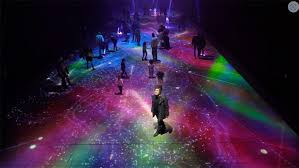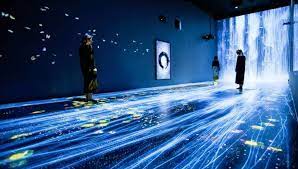In the current market environment, the lighting industry has developed a massive scale and diversified business model, offering a wide range of solutions for both individual consumers and commercial clients. This sector is no longer limited to simply launching stylish lighting fixtures; it is now focusing on innovative products that align with ecological development and the concept of "human-centered lighting." Lena Lighting's ClueIn system is a prime example of this trend.

The Core Driving Force of Industrial Transformation
The global population has reached nearly 8 billion and continues to grow at a rate of 90 million per year. This population expansion has become a key driver of lighting market demand. While driving industry expansion, it also presents multiple challenges for manufacturers. Especially in the context of global climate change, delivering lighting products is no longer the primary objective. Ensuring the environmental performance of products, significantly reducing energy costs, and effectively improving users' quality of life have become key development directions for the industry.
At the same time, the trend of integrating energy-saving features with personalized design is also attracting significant attention and has significant investment implications. For example, the Baris LED lighting product can achieve unique lighting effects up to 6 meters long without the need for additional wiring. This product leverages the lamp's own intelligent lighting management capabilities and is compatible with DALI control systems. Such innovative solutions are gaining widespread recognition among investors.
Illuminating Demands Increasing with Urbanization
Population growth is also accelerating the pace of urbanization worldwide. More and more people are flocking to cities, driven by their significant advantages in employment opportunities, personal development opportunities, and convenient communication. Research data shows that demand for general lighting in large metropolitan areas is significantly higher than in other regions, and global GDP growth is primarily concentrated in these metropolitan areas. Against this backdrop, the development of urban lighting has become a critical challenge for suppliers, designers, and technology developers.

In recent years, the urban lighting sector has seen rapid progress in improving energy efficiency, with a continuous emergence of various innovative technologies to reduce energy consumption. LED technology, as a core innovation, has successfully replaced traditional lighting sources and become the mainstream market. Furthermore, intelligent lighting management and control systems (such as Lena Lighting's Clue City system) and the concept of "human-centric lighting" are becoming increasingly popular. These solutions flexibly adjust light parameters based on users' daily activities. Products that align with these trends have already emerged in the market, such as the Tiara Led street lighting fixture, which won a Green Design Award at Poland's top design competition. This smart luminaire boasts efficient energy utilization and integrates with the advanced Clue City management system, automatically adjusting lighting brightness based on traffic flow, time of day, and natural light intensity. Solutions like these not only significantly reduce operating costs and CO2 emissions, but also improve road safety and enhance the driver experience.
The Dual Impact of Policy and Scenario Changes
The EU's strategic reform initiatives have provided strong support for upgrades in urban and residential lighting. Investments in infrastructure development, transportation network improvements, energy transition, and ecological protection have created favorable conditions for the rapid implementation of the "Green Deal," impacting both new lighting projects and the retrofitting of existing lighting systems.
Immediate improvements in energy efficiency are a core objective of EU policy, and this trend is particularly evident in lighting products. Current mainstream lighting products generally offer strong resistance to mechanical damage and weather, extending their lifespan and further enhancing their environmental credentials. Luminaires such as the Oculus LED and Tytan LED Pro exemplify this trend. They maintain high luminous efficacy while offering exceptional durability, adapting to the demands of complex environments such as production workshops and warehouses.
Innovation and Application of Humanized Technologies
The continued advancement of digitalization and breakthroughs in innovative technologies have injected strong momentum into the lighting industry. In recent years, the smart lighting system ClueIn has garnered significant attention for its unique functional advantages. It flexibly adjusts lighting based on human biorhythms, time of day and season, and real-time traffic flow or workplace requirements.

The market acceptance of these smart lighting systems continues to grow, attracting both individual consumers and investors seeking cost savings. Precisely in response to this demand, lighting products embracing the "human-centered lighting" concept have been widely adopted in street lighting and public buildings. This trend focuses not only on cost reduction and ecological protection, but also on improving user comfort and safety. Its core advantage lies in leveraging natural light parameters to closely align with human visual needs. Developments in the Polish Lighting Market
Poland's domestic lighting industry is also closely aligned with global trends, continuously launching products with improved quality, lower energy consumption, enhanced environmental performance, and more user-friendly designs, which are exported to global markets. Major local companies have keenly recognized the development potential of commercial lighting and have increased their investment in the research and development and production of specialized lighting products for commercial spaces, industrial plants, and office buildings.
Polish lighting manufacturers have always prioritized meeting user needs and continuously optimizing their product portfolios. The COVID-19 outbreak is a prime example, spurring lighting designers to incorporate UV technology into the development of modern lighting products. The Sterilion Flow UV-C lamp is a representative example of this innovation. It not only operates in active environments, but also boasts a striking design and is a highly effective solution for airborne virus and bacteria purification.

